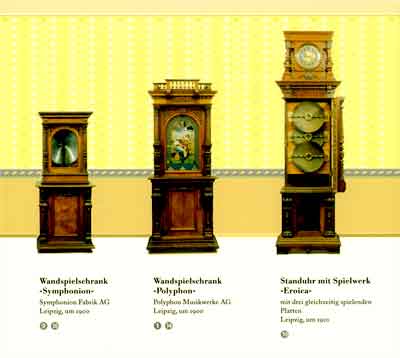 Dutch saxophonist, electronic and contemporary music composer Gilius van Bergeijk, born 1946, studied with Kees van Baaren and Dick Raaijmakers. While teaching electronic music at The Hague Royal Conservatory since 1972, he also collaborated with Peter Brötzmann, Willem Breuker and the Instant Composers Pool. See the Wikipedia article for more info. Van Bergeijk’s trademark style of deconstructing pre-existing music and systematic use of a limited number of elements in his compositions is masterfully showcased on this LP, which pairs 2 emblematic works by the composer.
Dutch saxophonist, electronic and contemporary music composer Gilius van Bergeijk, born 1946, studied with Kees van Baaren and Dick Raaijmakers. While teaching electronic music at The Hague Royal Conservatory since 1972, he also collaborated with Peter Brötzmann, Willem Breuker and the Instant Composers Pool. See the Wikipedia article for more info. Van Bergeijk’s trademark style of deconstructing pre-existing music and systematic use of a limited number of elements in his compositions is masterfully showcased on this LP, which pairs 2 emblematic works by the composer.
♫ Over de Dood en de Tijd, or On Death and Time, after Schubert’s Death and the Maiden, is an ambitious work in 3 parts. In the 1st, noisy, distorted electronic sounds emulate voices trying to emerge from a chaotic background – this part is reminiscent of Dick Raaijmakers’ own, ultra-radical Ballad ‘Erlkönig’ from 1966. In the 2nd movement, starting around 7:50, contralto Geertje Kuipers and pianist Jan Sprij interpret the Schubert original song, while the composer meticulously edits the tape to alter the pitch of some notes, progressively creating a cyborg version of the song. The effect is subtle but quite unsettling. Actually, Over de Dood… is entirely based on this natural vs. artificial duality, as the 3rd part will again show. In this final section, starting at 20:40, the notes played by church organist Huub ten Hacken trigger crunchy, noisy electronic sounds superimposed over his playing. The electronic filtering is configured so as to completely deface the natural sound, replacing it with ugly, artificial noises Van Bergeijk’ calls “jubilant cracking”, supposed to destroy (musical) Time. All in all, the entire piece is masterfully realized and conceptually powerful.
In 1970, Van Bergeijk was commissioned to write a piece for the newly restored Busy Drone mechanical organ, or De Bezige Bij in Dutch, housed in Amsterdam’s Stedelijk Museum since 1972. A musical deconstruction of Johan Sebastian Bach’s Double Concerto for Violin and Oboe, BAC was painfully punched on paper rolls by 2 assistants. It is a lively piece, basically emulating the 2 instruments of the original Concerto, while the organ playing is interrupted several times by a jazz drum solo and… castanets! From what I understand, Bach’s original score was submitted to aleatory procedures and parts of the score were scattered over the length of the piece while the square waltz form remained intact, thus creating an effect of familiarity and unfamiliarity at the same time, an aural illusion. It’s not Bach you’re hearing, it’s BAC, as “the last beat of each bar of all three movements was excised and put together in the same order to form a fourth movement” (from liner notes). There’s an analysis of BAC in Dutch on this page. Another short Van Bergeijk composition for the same organ appeared on The Busy Drone compilation LP on BVHaast in 1981. The sound of this organ is not perfect and a few hiccups can be heard on the BVHaast LP, adding to an already very lively and colorful sonority.
- Over de Dood en de Tijd (29:41)
for electronic, voice, piano and organ - BAC (15:25)
for mechanical organ
Total time 45:06
LP released by Donemus/Composers’ Voice, ref. CV 8203, Amsterdam, The Netherlands, 1982
* *
*














